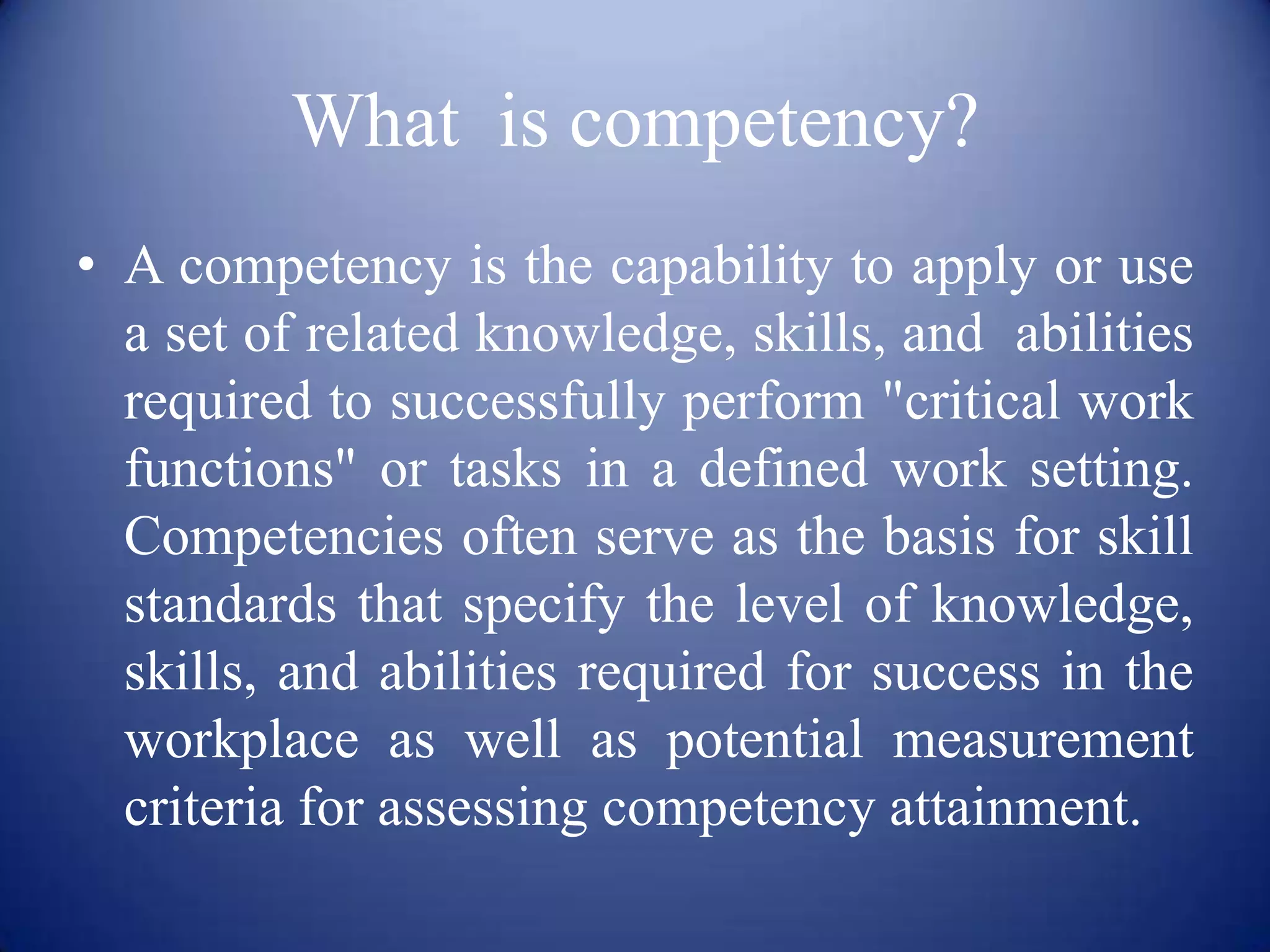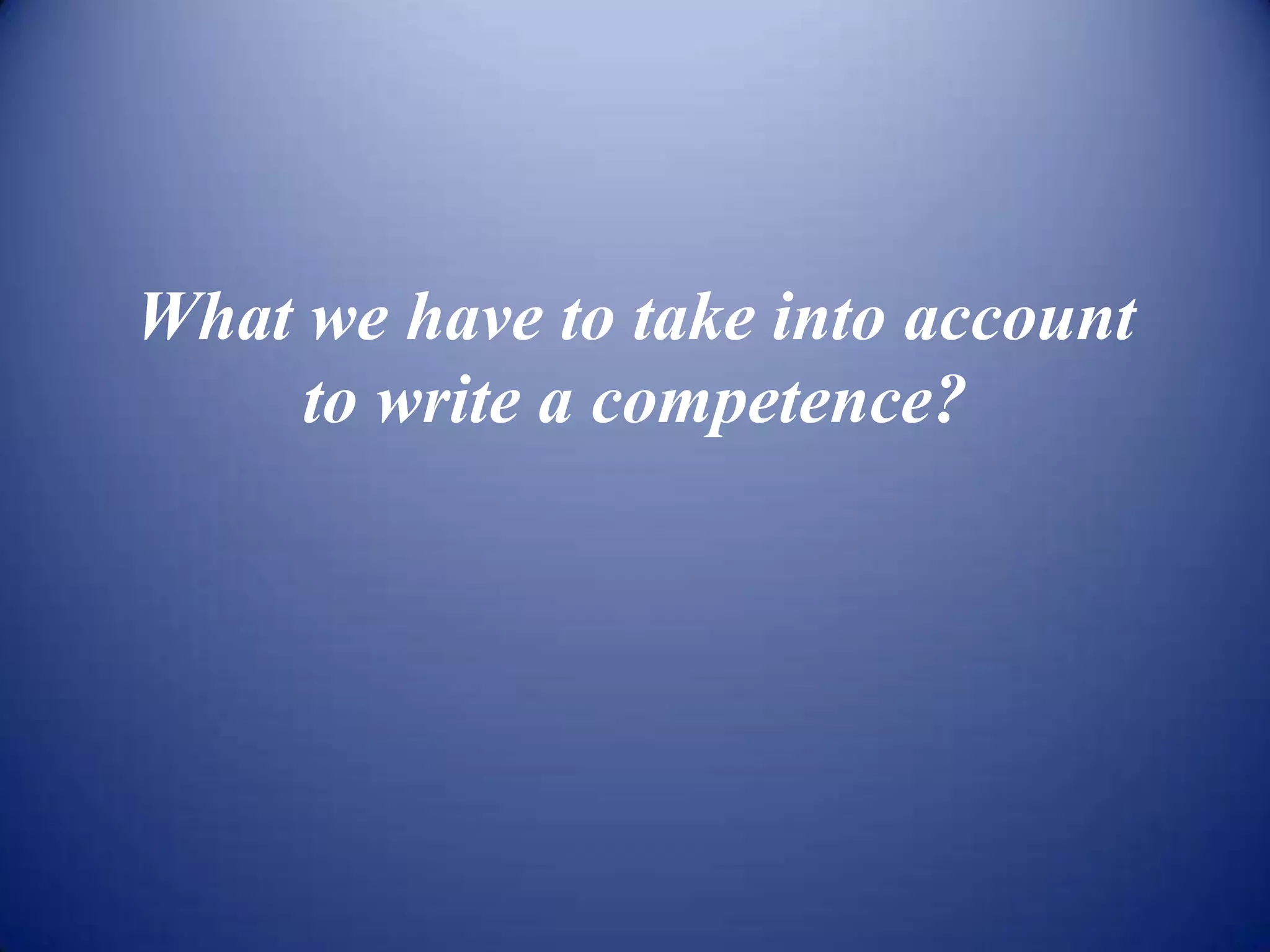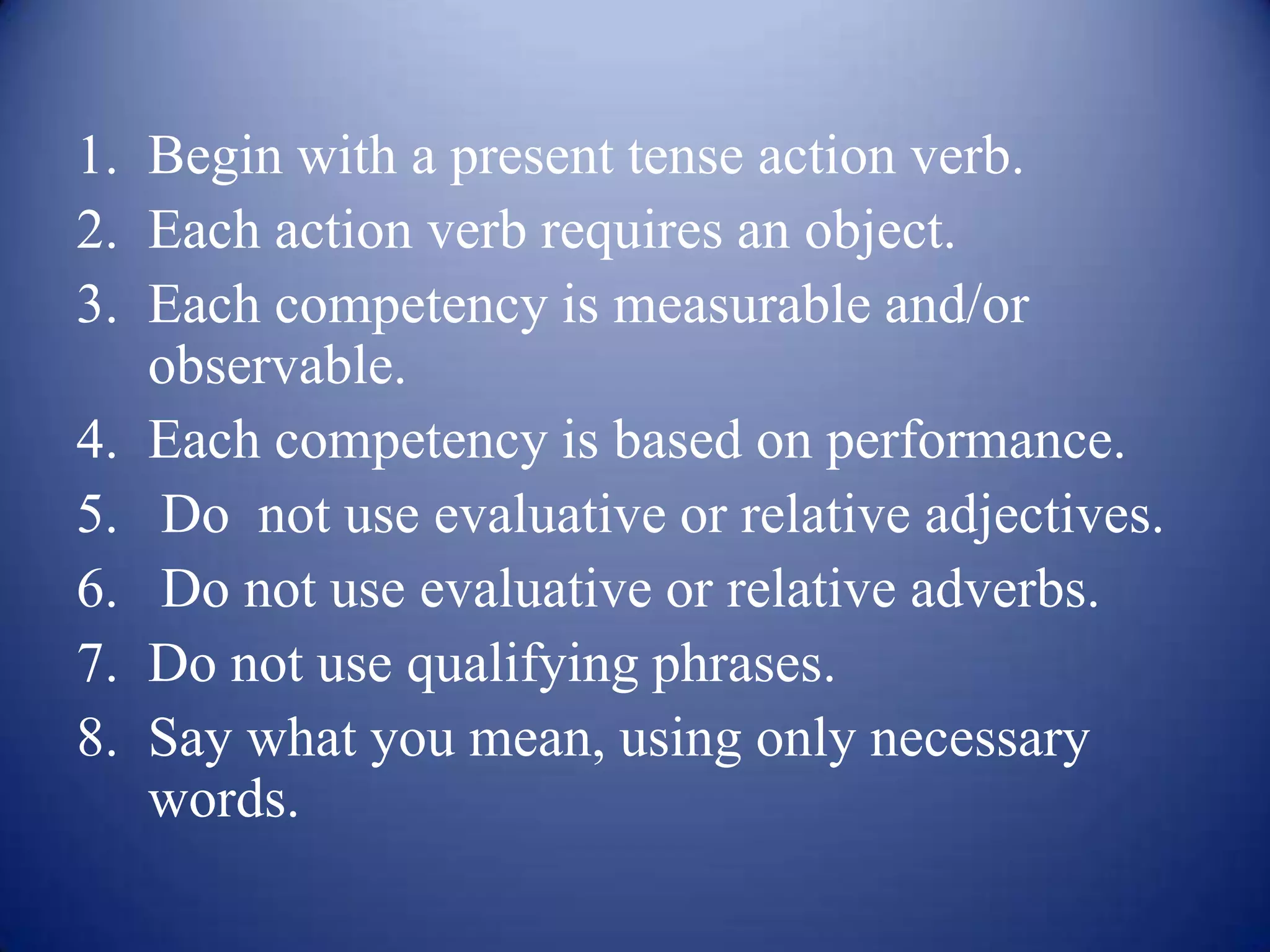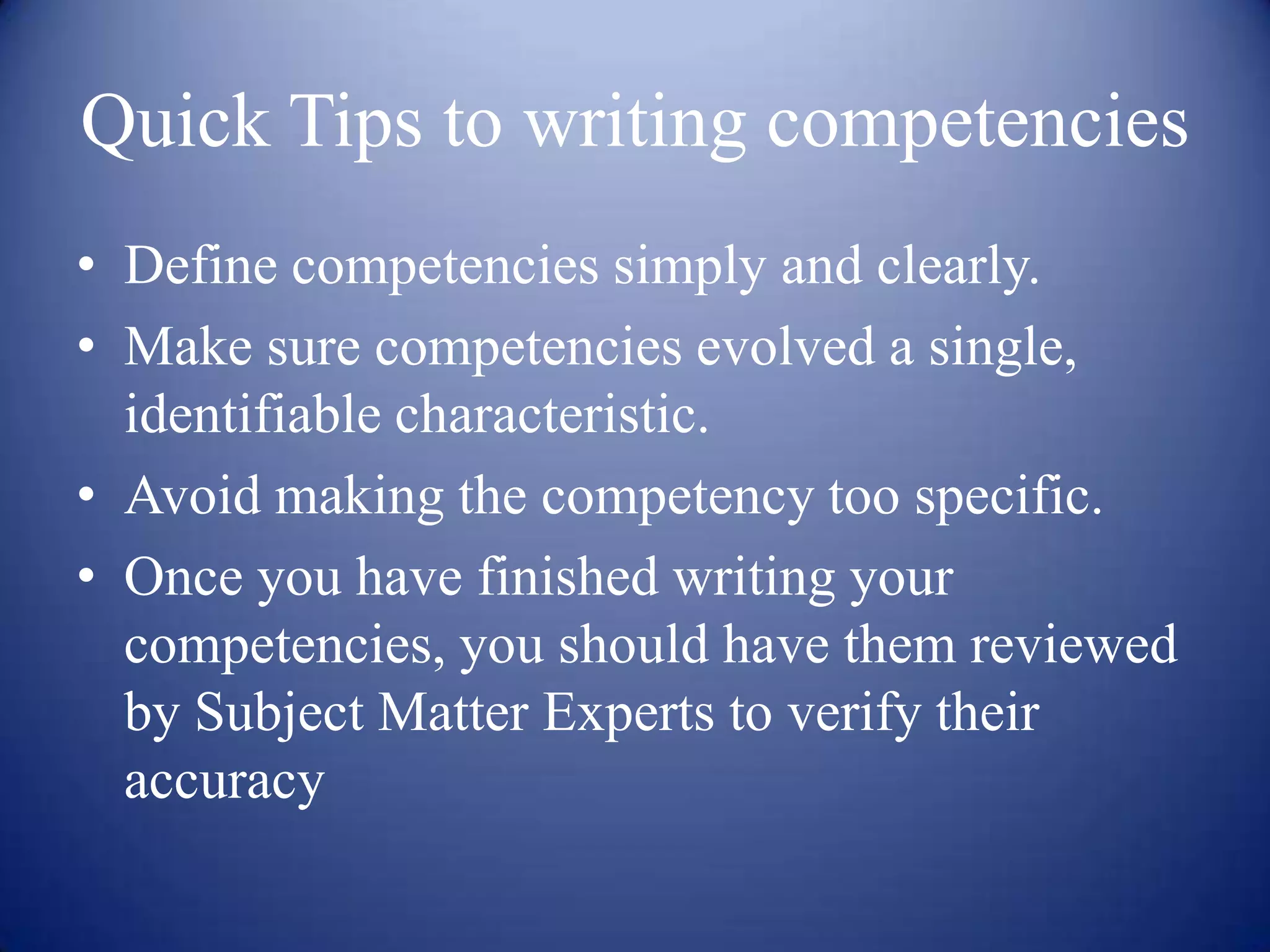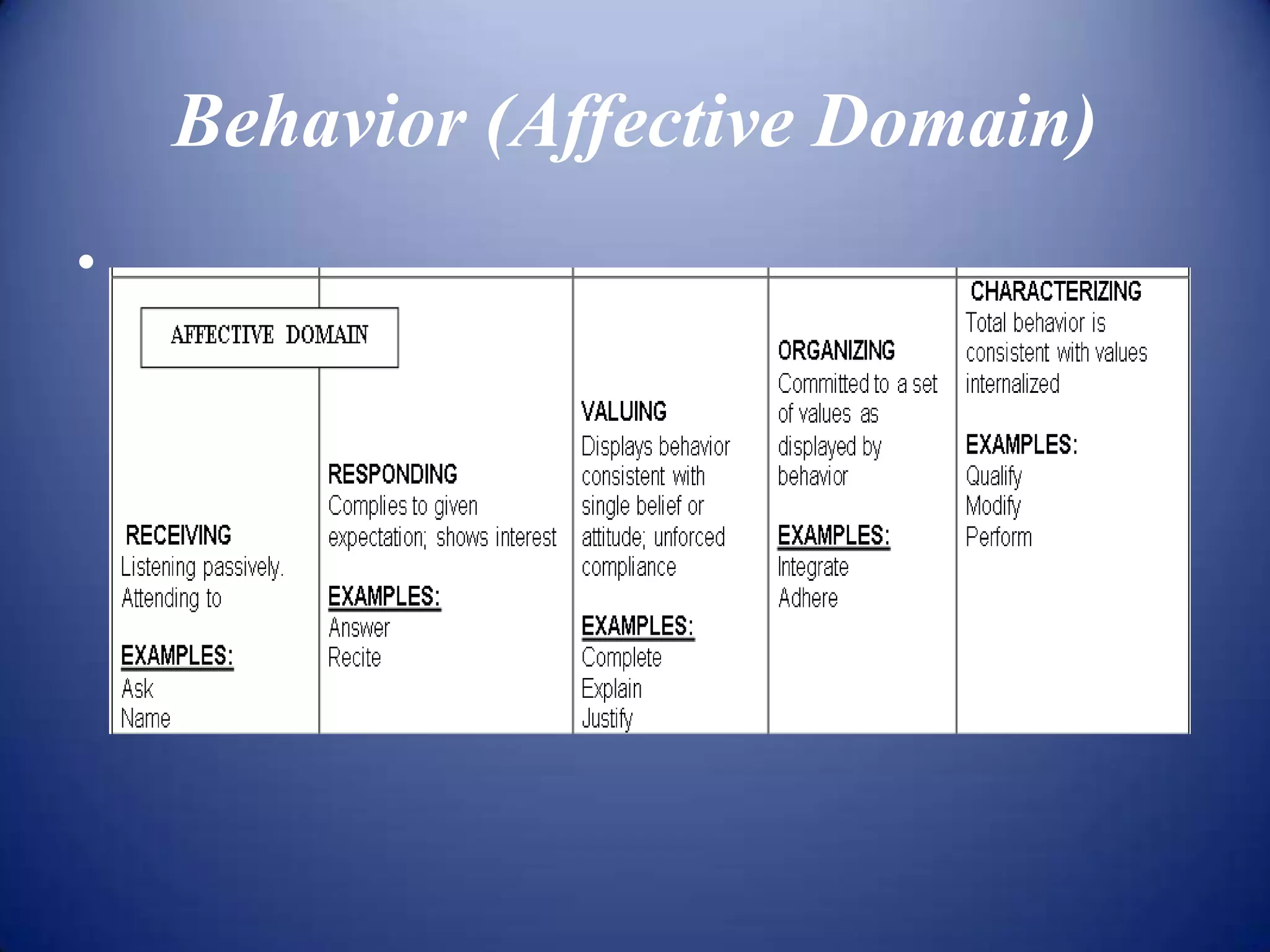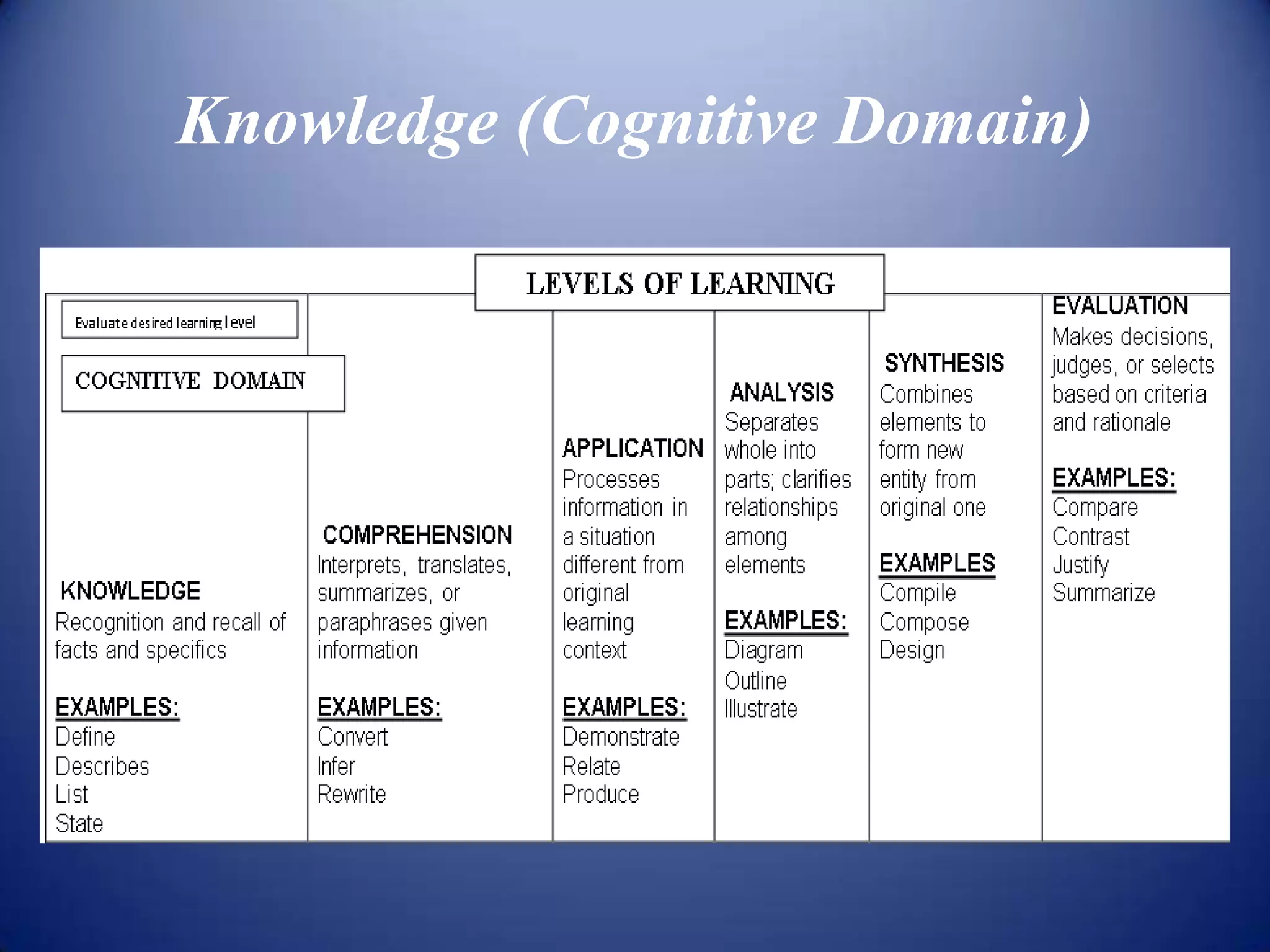1. A competency is a set of related knowledge, skills, and abilities required to successfully perform tasks in a defined work setting. Competencies serve as the basis for skill standards and potential measurement criteria for assessing competency attainment.
2. When writing a competence, it should begin with a present tense action verb, include an object for the verb, and be measurable and based on performance. Qualifying phrases, evaluative language, and unnecessary words should be avoided.
3. Competencies should be defined simply and clearly to describe a single characteristic and avoid being too specific. Subject matter experts should review competencies to verify their accuracy.

